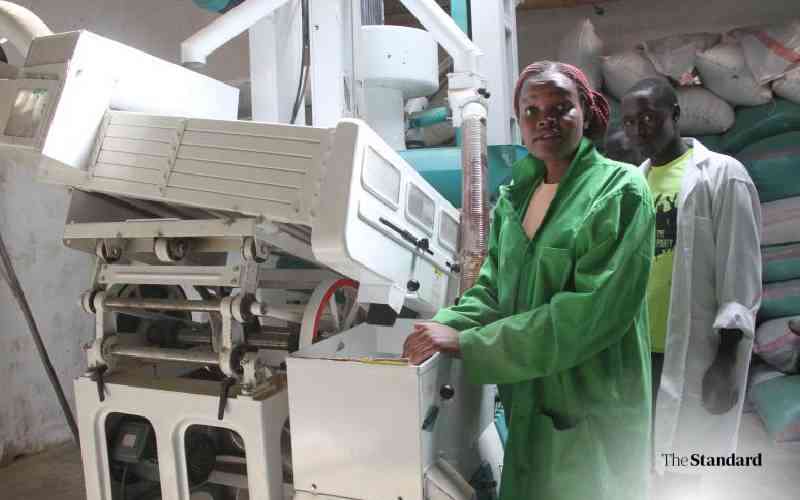Furniture as Art: Interview with Production and Design Expert Viktor Sobolevskyi
In the era of ephemeral trends and mass production, there are craftsmen for whom creating furniture is not just a craft, but a true art that requires both impeccable technical execution and a special vision. Viktor Sobolevskyi, an expert in the field of furniture production and design, an entrepreneur known for his unique technological developments, belongs to this cohort. His path is the story of the transformation of a builder into a creator of objects in which functionality is harmoniously combined with aesthetics, and attention to detail is elevated to the absolute. We invite you to the world of Viktor Sobolevskyi, where furniture acquires the features of a work of art.
– The origins of my perception of craft go back to childhood, for example, to my grandfather, who was engaged in carpentry and instilled in me respect for manual labor, for the process of creation. Construction education and subsequent many years of practice, up to the position of foreman, gave me a deep understanding of the structure, materials, reliability of connections – this is a kind of anatomy of the object, without knowledge of which it is impossible to create something durable and harmonious. Construction taught a systematic approach and calm in the face of complex tasks – qualities necessary for painstaking work that requires utmost concentration. Moving into the furniture business allowed this understanding of structure and precision to be channeled into a more aesthetic direction, where attention to detail and cleanliness of execution are paramount. The real reason is the desire for more subtle, meticulous work, where the result can be brought to perfection.
– The art of a furniture maker is truly honed through practice. The period of work as the head of the quality department at the Cappuccino studio was a time of intense immersion in work. Studying advanced hardware technologies, such as the Austrian Blum, is only a small part. It was much more important to develop observation skills, learn to see the nuances of quality, understand how each element functions and how it affects the overall perception of the product. Technical precision is not an end in itself, but a tool for achieving visual purity and impeccable functionality. Ideal gaps, smooth operation of mechanisms, hidden fasteners, precision fitting of parts – all this creates a feeling of integrity, completeness, elegance. When the technical side is impeccable, it becomes invisible, allowing the form and material to reveal themselves to the fullest. In my opinion, this is one of the facets of aesthetic perfection – when the complexity of execution is hidden behind apparent simplicity and ease.
– Of course, the technology we developed for Mebelshik.pro is more than just an engineering solution. It was a creative search for harmony between speed, quality and ease of assembly. The inspiration was the desire to make high-quality custom-made furniture available faster, without sacrificing any aspect of execution. We sought to create a system similar to an ideal mechanism or even a construction set, where each element is exactly in its place and connects with others effortlessly. Having spent about three years debugging every little detail together with my partner-constructor, we achieved that a complex process turned into an elegant sequence of actions. The ability to assemble a complex kitchen in a day in the workshop and in a day at the customer’s place, or even send it to another country for self-assembly by the customer, is the result of a profound rethinking of the production process itself. It is a demonstration that efficiency can be elegant, and technology can serve not only the function, but also a certain aesthetics of the process. We have proven that speed and the highest quality, attention to detail (“quality in the details”) can coexist.
– The channel was created with the desire to share accumulated experience and vision. It is important for me to show not only “how” to do it, but also “why” to do it this way. I try to convey the idea that behind every quality product there is a deep understanding of materials, technologies and, importantly, respect for work and the end user. By showing the assembly and installation processes, discussing the nuances of fittings or design solutions, I try to instill in viewers a taste for quality, teach them to notice the details that distinguish a good thing from a mediocre one. This is an attempt to improve the general culture of furniture perception, to shift the emphasis from momentary fashion or low price to durability, ergonomics, and aesthetic consistency. Online consultations and training of other craftsmen are also part of this mission: disseminating knowledge and standards that help create furniture that can bring joy for years and be perceived not just as a set of boards, but as a full-fledged element of interior art.
– The American market is very interesting and has great potential. Indeed, there is a certain gap between the mass product and the European approach, where the emphasis is on design, quality of materials and execution. I see a growing interest in European furniture, its conciseness, functionality and durability. Customers like clean lines, thoughtful solutions, attention to detail, typical of European schools. My work at Ucon as a foreman allows me to demonstrate this in practice, ensuring the highest level of installation, which in itself is part of the product presentation. Of course, there are difficulties. Sometimes I have to explain the value of certain solutions that affect the cost, but provide a completely different level of comfort and aesthetics. The language barrier still prevents me from fully conveying all the nuances of the philosophy, but I am working on it. Overall, I am optimistic about the future – quality, well-thought-out furniture finds its admirers everywhere.
– In-house production is an opportunity to have complete control over the process, from the idea to the final implementation, and a chance to realize your vision without compromise. In my opinion, the ideal enterprise is a place where technology serves craftsmanship, and does not replace it. Where each employee shares the philosophy of quality and attention to detail. For me, the line between simply good furniture and a work of art lies in several planes. First of all, it is impeccable execution – that very “quality in the details”. Then – thoughtfulness of design, ergonomics, harmony of form and function. This is the use of high-quality, pleasant to the touch and durable materials. Finally, this is a kind of “soul” of the object, the feeling that it was created with love and respect for the craft and the future owner. It may not be a flashy design, but a calm, confident elegance that does not become outdated over time. Furniture as art is an object that not only performs its function, but also enriches the space, gives aesthetic pleasure and serves for many years, possibly being passed on as an inheritance.








